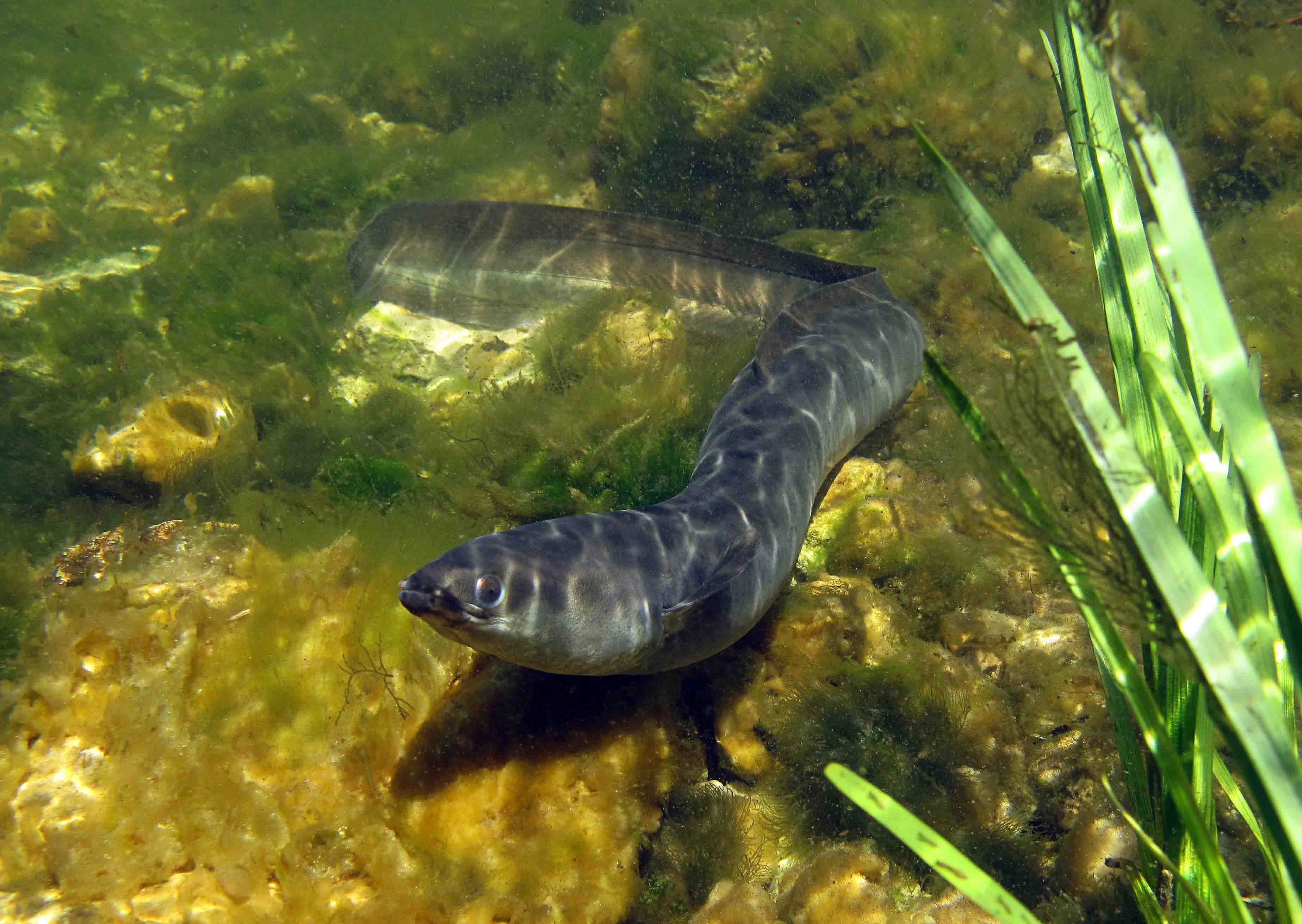
Threatened eels disappear in the deep on their way to the Sargasso Sea
When the threatened European eels cross the Atlantic Ocean to get to the Sargasso Sea to spawn, they swim in deep water. But this does not protect them from predators, researchers from the University of Southern Denmark report: Even in deep water the eels are hunted and eaten.
 The European eel is in decline, and all over the world biologists are struggling to map its mysterious life cycle in order to bring its numbers back up. One of the great puzzles is why and how the eel each year travels thousands of kilometers to get to the Sargasso Sea to spawn.
The European eel is in decline, and all over the world biologists are struggling to map its mysterious life cycle in order to bring its numbers back up. One of the great puzzles is why and how the eel each year travels thousands of kilometers to get to the Sargasso Sea to spawn.
A European monitoring project has provided a group of eels with data loggers before their big trip across the Atlantic, and now biologist and associate professor Magnus Wahlberg from Southern University and colleagues from DTU have got a surprising message from the data loggers:
"It turns out that eels are hunted and eaten by whales. It happens in surprisingly deep waters where we normally think that the eels would be safe”, he says.
To date only a single case of a whale with an eel in its stomach has been described in the scientific literature. So these large marine mammals are usually not included in the discussion, when biologists talk about the eel’s natural enemies.
"We do not know exactly which whale species are at play, but a good guess would be the pilot whale", says Magnus Wahlberg.
Stuck in the belly
The new knowledge that whales actually hunt and eat eels comes from three events in the North Atlantic in 2009 and 2010. 156 eels had been provided with data loggers and sent off on their journey across the Atlantic Ocean. Three of the tagged eels never made it, but ended their lives in the belly of a larger animal. In these bellies the data loggers continued to record data, and after a while they were excreted by their new host animal and washed up on a shore. Here they were found by passers-by and returned to the researchers.
The data loggers told a detailed story. Suddenly on 600 meters depth they got surrounded by a warmer environment than the cold North Atlantic waters that surrounded the eels. The temperature rose suddenly from 10 degrees to 36 degrees Celsius and indicated that the data loggers were no longer sitting on an eel, but had reached the inside of a larger, deep-diving marine mammal.
The temperature continued to go up and down:
"We imagine that every time the host animal took in a new and cold prey in its stomach, the temperature dropped”, says Magnus Wahlberg.
According to the recorded depth profiles it is unlikely that the hunters were seals.
"Seals do not dive this deep. The dive patterns better suit that of a pilot whale", he explains.
Magnus Wahlberg is not quite sure what the new data on eel hunting in deep water mean.
"It might be quite common for whales to hunt eel in deep water and that we just have never seen it before. This knowledge may be important for understanding how marine deep-water ecosystems functions”, says Magnus Wahlberg.
The three tagged eels were launched from Ireland and France. Between 25 and 256 days later their data loggers washed up on the coasts off Bindal in Norway and Isle of Coll in Scotland.
Facts about the European eel
The European eel (Anguilla anguilla L) is hatched in salt water in the Sargasso Sea and lives much of its life in fresh water in Europe's lake , rivers and streams before it migrates the 6,000 kilometers back to the Sargasso Sea to spawn. Adults measure 60-80 cm, but can reach 150 cm. Researchers have not yet managed to make eel thrive in fish farms.
Ref: Evidence of marine mammal predation of the European Eel (Anguilla anguilla L) on its marine migration. Magnus Wahlberg, Håkan Westerberg , Kim Aarestrup , Eric Feunteun , Paddy Gargan, David Righton. Deep - Sea Research Part 1 Accepted 8 January 2014.
Photo: Anders Asp.
Contact Magnus Wahlberg. magnus@biology.sdu.dk. Phone: +45 2216 3950.